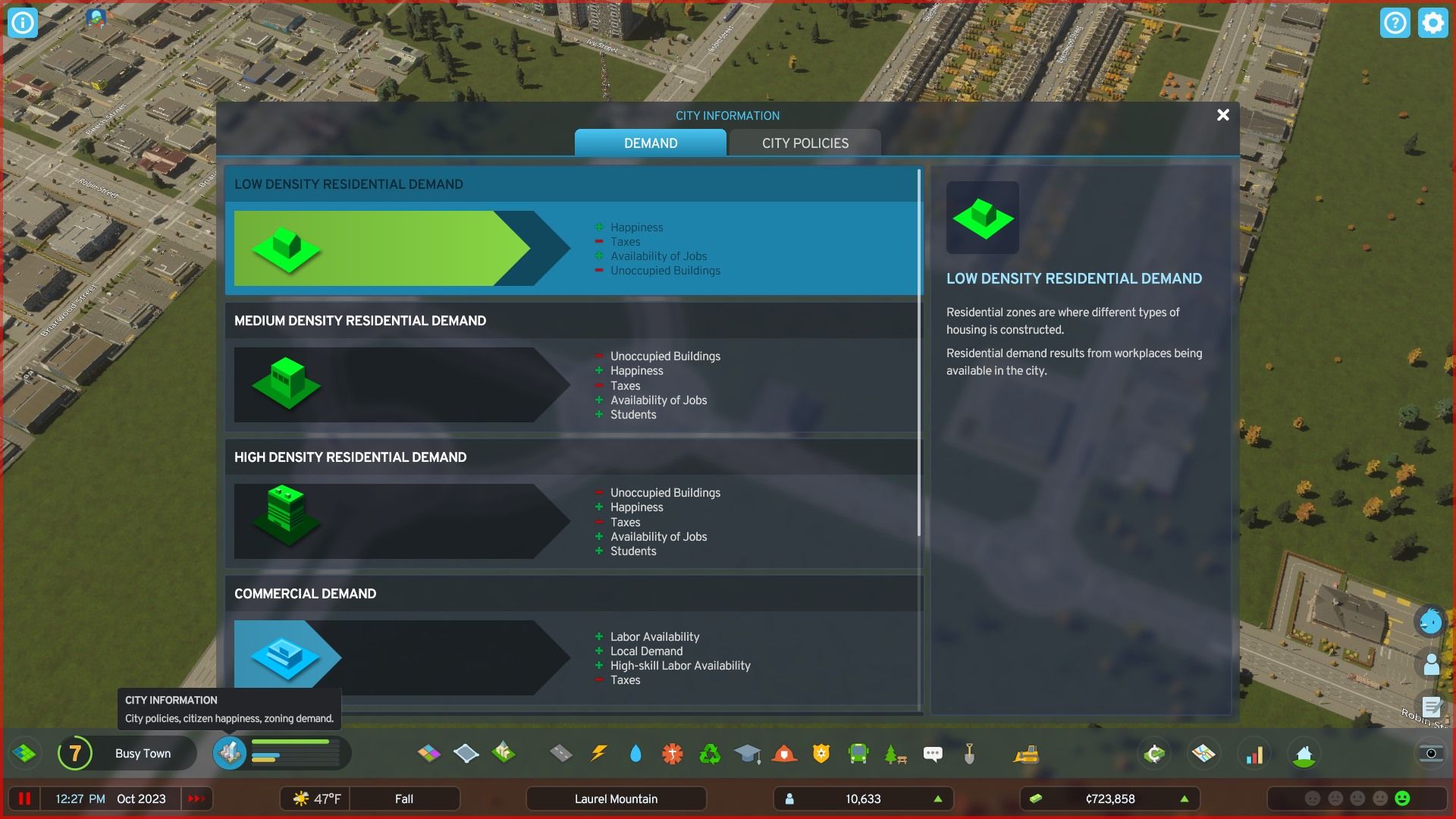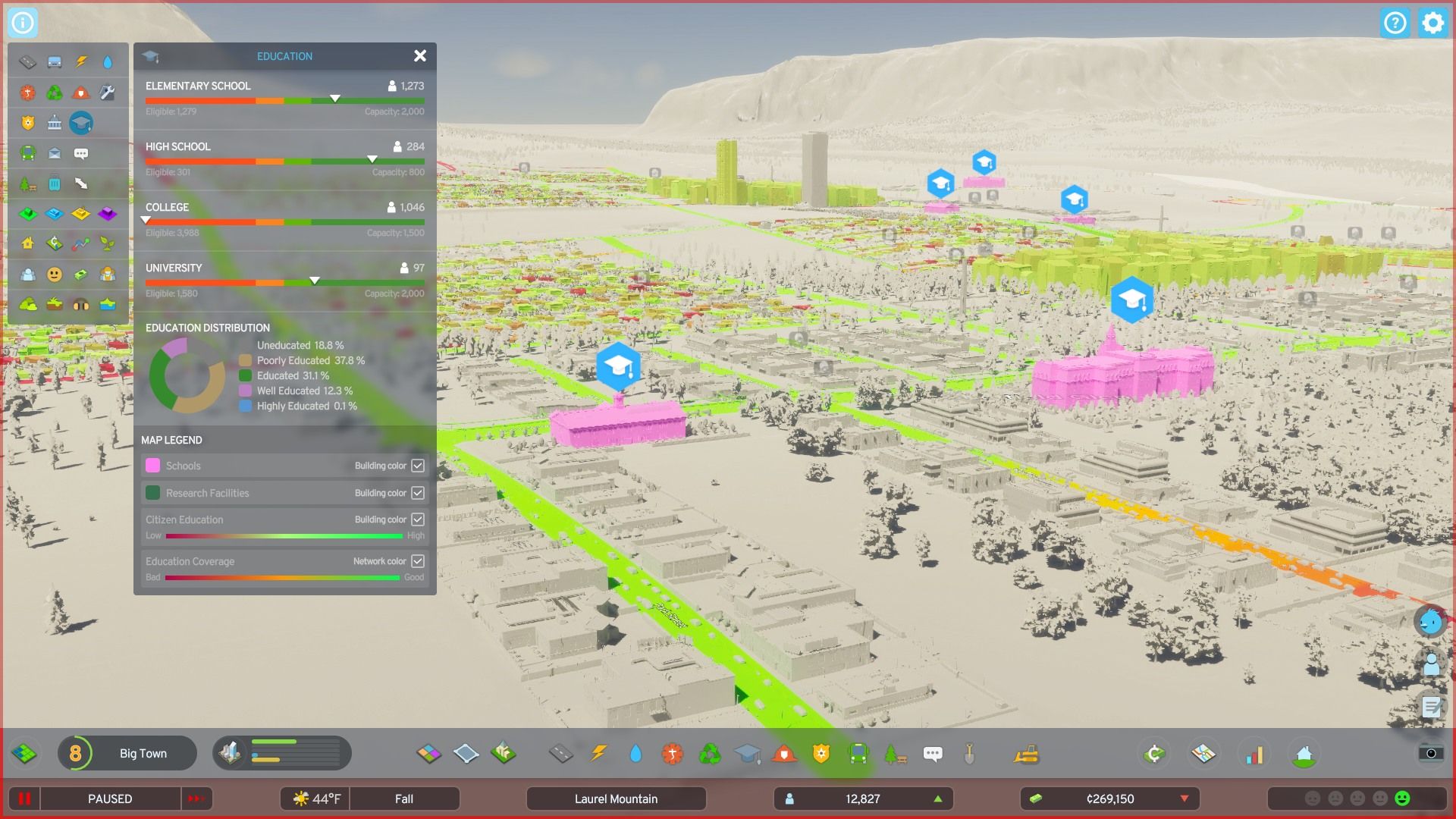
How to Boost High-Density Demand in Cities: Skylines 2

Maximizing high-density demand in Cities: Skylines 2 can be challenging Explore the City Information Screen and optimize the Education System for a thriving metropolis
In Cities: Skylines 2, the demand for business zones is combined, unlike the demand for residential zones which is separate. Each density level (low, medium, and high) has its own demand indicator. Additionally, individuals seeking low-density zones will not consider moving to areas with medium or high-density.
This poses a challenge for players as high-density apartments generate more profit and occupy less space per resident. Moreover, commercial zones benefit from customer concentration in a limited area. Hence, players of Cities: Skylines 2 must devise strategies to specifically boost demand for medium and high-density residential areas.
The City Information Screen
To reveal the secret, access the City Information screen by selecting the round button linked to the demand bars at the bottom. Here, players can gain insight into the factors influencing the increase or decrease in demand for each zone type.
As depicted in the image above, all residential zones have common growth factors such as "Happiness" and "Taxes," with a notable exception. The presence of students in the city, irrespective of their education level, promotes the preference for medium and high-density housing over low-density options. Hence, the education level of the city acts as the primary catalyst for high-density demand.
The Education System
Education in Cities: Skylines 2 is a crucial component of a complex system that also involves employment, population growth, and the aging process within the game. The majority of children will attend elementary school if enough schools are available in close proximity to their residences. Similarly, most teenagers will enroll in high school if they have previously completed elementary education, although high schools do not need to be conveniently located on every corner.
Subsequently, both teenagers and adults have the opportunity to pursue college education, but only if they have already acquired a basic level of education. Graduates from college can then progress to a university, and those who complete university studies fall into the "Highly Educated" category. As citizens dedicate more time to their studies, the demand for medium and high-density housing increases. Furthermore, highly educated individuals are qualified for employment in high-end industries, thereby contributing to a city's overall economic prosperity.
Noise pollution can also influence demand. Mixed Housing and Low-Rent Housing, in particular, generate a limited level of noise pollution within their respective buildings. As a result, they are considered less attractive to families compared to other zones.
Furthermore, it is essential to remember that even a small change can have a significant impact. The residential demand bars represent the number of families seeking to relocate to the city, not the number of buildings. Consequently, a single row of high-density residential development can eliminate the same level of demand as five rows of low-density housing.
Cities: Skylines 2 is available now on PC, PS5, and Xbox Series X/S.
Cities: Skylines 2
Platform(s) PC, PS5, Xbox Series X, Xbox Series SReleased October 24, 2023Developer(s) Colossal OrderPublisher(s) Paradox InteractiveGenre(s) City Builder
Editor's P/S
In the recently released Cities: Skylines 2, players face the challenge of boosting high-density demand to create thriving metropolises. Unlike the separate demand for residential zones in the previous game, the demand for business zones is now combined. This means that players must employ specific strategies to increase the demand for medium and high-density residential areas, as high-density apartments are more profitable and occupy less space per resident.
The secret to boosting high-density demand lies in the education system. By accessing the City Information screen, players can gain insight into the factors influencing the increase or decrease in demand for each zone type. The presence of students in the city, regardless of their education level, promotes the preference for medium and high-density housing over low-density options. Therefore, the education level of the city acts as the primary catalyst for high-density demand.
Players can further enhance the education system by ensuring that there are enough schools in close proximity to residential areas. This will encourage more citizens to pursue higher education, leading to an increase in the demand for medium and high-density housing. Additionally, it is important to remember that even small changes can have a significant impact. A single row of high-density residential development can eliminate the same level of demand as five rows of low-density housing.
In conclusion, boosting high-density demand in Cities: Skylines 2 requires a strategic approach focused on developing the education system and optimizing the residential zones. By carefully managing these factors, players can create thriving cities with bustling high-density neighborhoods.









